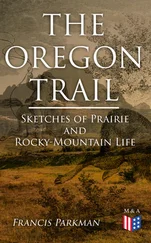Francis Parkman - A Half-Century of Conflict - Volume II
Здесь есть возможность читать онлайн «Francis Parkman - A Half-Century of Conflict - Volume II» — ознакомительный отрывок электронной книги совершенно бесплатно, а после прочтения отрывка купить полную версию. В некоторых случаях можно слушать аудио, скачать через торрент в формате fb2 и присутствует краткое содержание. Жанр: foreign_prose, История, foreign_edu, foreign_antique, на английском языке. Описание произведения, (предисловие) а так же отзывы посетителей доступны на портале библиотеки ЛибКат.
- Название:A Half-Century of Conflict - Volume II
- Автор:
- Жанр:
- Год:неизвестен
- ISBN:нет данных
- Рейтинг книги:4 / 5. Голосов: 1
-
Избранное:Добавить в избранное
- Отзывы:
-
Ваша оценка:
- 80
- 1
- 2
- 3
- 4
- 5
A Half-Century of Conflict - Volume II: краткое содержание, описание и аннотация
Предлагаем к чтению аннотацию, описание, краткое содержание или предисловие (зависит от того, что написал сам автор книги «A Half-Century of Conflict - Volume II»). Если вы не нашли необходимую информацию о книге — напишите в комментариях, мы постараемся отыскать её.
A Half-Century of Conflict - Volume II — читать онлайн ознакомительный отрывок
Ниже представлен текст книги, разбитый по страницам. Система сохранения места последней прочитанной страницы, позволяет с удобством читать онлайн бесплатно книгу «A Half-Century of Conflict - Volume II», без необходимости каждый раз заново искать на чём Вы остановились. Поставьте закладку, и сможете в любой момент перейти на страницу, на которой закончили чтение.
Интервал:
Закладка:
For twenty days the travellers saw no human being, so scanty was the population of these plains. Game, however, was abundant. Deer sprang from the tall, reedy grass of the river bottoms; buffalo tramped by in ponderous columns, or dotted the swells of the distant prairie with their grazing thousands; antelope approached, with the curiosity of their species, to gaze at the passing horsemen, then fled like the wind; and as they neared the broken uplands towards the Yellowstone, they saw troops of elk and flocks of mountain-sheep. Sometimes, for miles together, the dry plain was studded thick with the earthen mounds that marked the burrows of the curious marmots, called prairie-dogs, from their squeaking bark. Wolves, white and gray, howled about the camp at night, and their cousin, the coyote, seated in the dusk of evening upright on the grass, with nose turned to the sky, saluted them with a complication of yelpings, as if a score of petulant voices were pouring together from the throat of one small beast.
On the 11th of August, after a march of about three weeks, the brothers reached a hill, or group of hills, apparently west of the Little Missouri, and perhaps a part of the Powder River Range. It was here that they hoped to find the Horse Indians, but nobody was to be seen. Arming themselves with patience, they built a hut, made fires to attract by the smoke any Indians roaming near, and went every day to the tops of the hills to reconnoitre. At length, on the 14th of September, they descried a spire of smoke on the distant prairie.
One of their Mandan guides had left them and gone back to his village. The other, with one of the Frenchmen, went towards the smoke, and found a camp of Indians, whom the journal calls Les Beaux Hommes, and who were probably Crows, or Apsaroka, a tribe remarkable for stature and symmetry, who long claimed that region as their own. They treated the visitors well, and sent for the other Frenchmen to come to their lodges, where they were received with great rejoicing. The remaining Mandan, however, became frightened,—for the Beaux Hommes were enemies of his tribe,—and he soon followed his companion on his solitary march homeward.
The brothers remained twenty-one days in the camp of the Beaux Hommes, much perplexed for want of an interpreter. The tribes of the plains have in common a system of signs by which they communicate with each other, and it is likely that the brothers had learned it from the Sioux or Assinniboins, with whom they had been in familiar intercourse. By this or some other means they made their hosts understand that they wished to find the Horse Indians; and the Beaux Hommes, being soothed by presents, offered some of their young men as guides. They set out on the 9th of October, following a south-southwest course. [Footnote: Journal du Voyage fait par le Chevalier de la Vérendrye en 1742. The copy before me is from the original in the Depot des Cartes de la Marine. A duplicate, in the Archives des Affaires Etrangères, is printed by Margry. It gives the above date as November 9th instead of October 9th. The context shows the latter to be correct.]
In two days they met a band of Indians, called by them the Little Foxes, and on the 15th and 17th two villages of another unrecognizable horde, named Pioya. From La Vérendrye's time to our own, this name "villages" has always been given to the encampments of the wandering people of the plains. All these nomadic communities joined them, and they moved together southward, till they reached at last the lodges of the long-sought Horse Indians. They found them in the extremity of distress and terror. Their camp resounded with howls and wailings; and not without cause, for the Snakes, or Shoshones,—a formidable people living farther westward,—had lately destroyed most of their tribe. The Snakes were the terror of that country. The brothers were told that the year before they had destroyed seventeen villages, killing the warriors and old women, and carrying off the young women and children as slaves.
None of the Horse Indians had ever seen the Pacific; but they knew a people called Gens de l'Arc, or Bow Indians, who, as they said, had traded not far from it. To the Bow Indians, therefore, the brothers resolved to go, and by dint of gifts and promises they persuaded their hosts to show them the way. After marching southwestward for several days, they saw the distant prairie covered with the pointed buffalo-skin lodges of a great Indian camp. It was that of the Bow Indians, who may have been one of the bands of the western Sioux,—the predominant race in this region. Few or none of them could ever have seen a white man, and we may imagine their amazement at the arrival of the strangers, who, followed by staring crowds, were conducted to the lodge of the chief. "Thus far," says La Vérendrye, "we had been well received in all the villages we had passed; but this was nothing compared with the courteous manners of the great chief of the Bow Indians, who, unlike the others, was not self-interested in the least, and who took excellent care of everything belonging to us."
The first inquiry of the travellers was for the Pacific; but neither the chief nor his tribesmen knew anything of it, except what they had heard from Snake prisoners taken in war. The Frenchmen were surprised at the extent of the camp, which consisted of many separate bands. The chief explained that they had been summoned from far and near for a grand war-party against that common foe of all,—the Snakes. [Footnote: The enmity between the Sioux and the Snakes lasted to our own time. When the writer lived among the western Sioux, one of their chiefs organized a war-party against the Snakes, and numerous bands came to join the expedition from a distance in some cases of three hundred miles. Quarrels broke out among them, and the scheme was ruined.] In fact, the camp resounded with war-songs and war-dances. "Come with us," said their host; "we are going towards the mountains, where you can see the great water that you are looking for."
At length the camp broke up. The squaws took down the lodges, and the march began over prairies dreary and brown with the withering touch of autumn. The spectacle was such as men still young have seen in these Western lands, but which no man will see again. The vast plain swarmed with the moving multitude. The tribes of the Missouri and the Yellowstone had by this time abundance of horses, the best of which were used for war and hunting, and the others as beasts of burden. These last were equipped in a peculiar manner. Several of the long poles used to frame the teepees, or lodges, were secured by one end to each side of a rude saddle, while the other end trailed on the ground. Crossbars lashed to the poles just behind the horse kept them three or four feet apart, and formed a firm support, on which was laid, compactly folded, the buffalo-skin covering of the lodge. On this, again, sat a mother with her young family, sometimes stowed for safety in a large open willow basket, with the occasional addition of some domestic pet,—such as a tame raven, a puppy, or even a small bear cub. Other horses were laden in the same manner with wooden bowls, stone hammers, and other utensils, along with stores of dried buffalo-meat packed in cases of rawhide whitened and painted. Many of the innumerable dogs—whose manners and appearance strongly suggested their relatives the wolves, to whom, however, they bore a mortal grudge—were equipped in a similar way, with shorter poles and lighter loads. Bands of naked boys, noisy and restless, roamed the prairie, practising their bows and arrows on any small animal they might find. Gay young squaws—adorned on each cheek with a spot of ochre or red clay, and arrayed in tunics of fringed buckskin embroidered with porcupine quills—were mounted on ponies, astride like men; while lean and tattered hags—the drudges of the tribe, unkempt and hideous—scolded the lagging horses, or screeched at the disorderly dogs, with voices not unlike the yell of the great horned owl. Most of the warriors were on horseback, armed with round, white shields of bull-hide, feathered lances, war-clubs, bows, and quivers filled with stone-headed arrows; while a few of the elders, wrapped in robes of buffalo-hide, stalked along in groups with a stately air, chatting, laughing, and exchanging unseemly jokes. [Footnote: The above descriptive particulars are drawn from repeated observation of similar scenes at a time when the primitive condition of these tribes was essentially unchanged, though with the difference that the concourse of savages counted by hundreds, and not by thousands.]
Читать дальшеИнтервал:
Закладка:
Похожие книги на «A Half-Century of Conflict - Volume II»
Представляем Вашему вниманию похожие книги на «A Half-Century of Conflict - Volume II» списком для выбора. Мы отобрали схожую по названию и смыслу литературу в надежде предоставить читателям больше вариантов отыскать новые, интересные, ещё непрочитанные произведения.
Обсуждение, отзывы о книге «A Half-Century of Conflict - Volume II» и просто собственные мнения читателей. Оставьте ваши комментарии, напишите, что Вы думаете о произведении, его смысле или главных героях. Укажите что конкретно понравилось, а что нет, и почему Вы так считаете.












